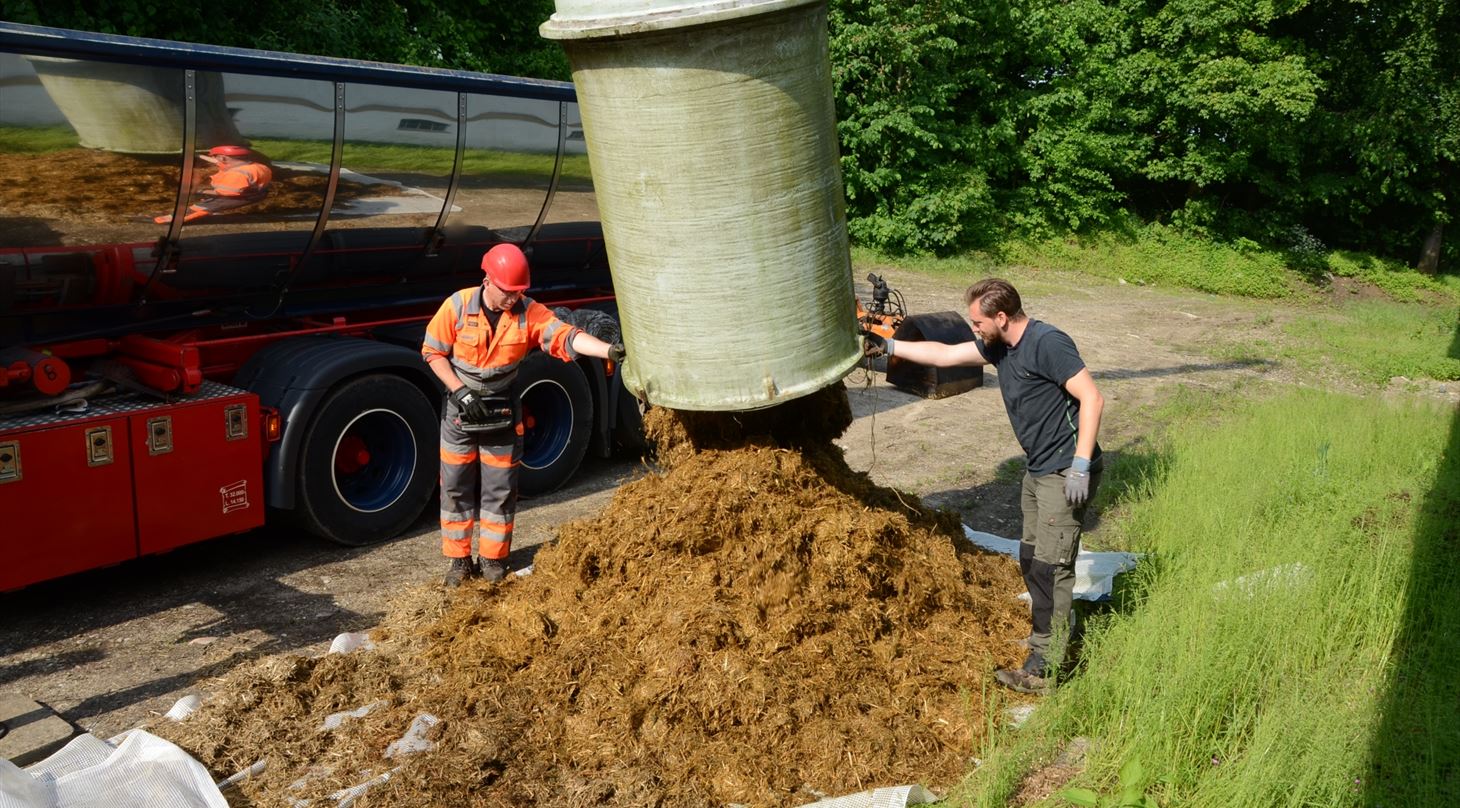
Storage of wet biomass
Utilization of biomass for various purposes often requires storage of the biomass for a certain period, e.g. from harvest of plant biomass until processing. The moisture content of the biomass is often high and will allow biological activity and precautions may, therefore, be required during storage. In some cases, it may be relevant with drying of the biomass, making the biomass shelf-stable. In other cases, it may be more appropriate to store the wet biomass as it is, e.g. by ensiling (anaerobic storage) or by composting (aerobic storage).
Optimal storage of wet biomass may depend on both the type of biomass and the application of the biomass. In certain cases, the storage may also have a pre-treatment effect on the biomass and, for instance, co-ensiling of straw and green biomass can increase the methane potential of straw which is beneficial for subsequent use in biogas production. Also, composting may improve the quality of the biomass for soil amendment. However, the quality changes during storage should be weighed against the storage loss.
How can Danish Technological Institute help you?
Danish Technological Institute (DTI) works with research and development within storage of biomass, and we can optimize storage of various types of biomass. This may include:
- Consultancy concerning storage of various types of biomass
- Planning and performing of storage experiments, e.g. ensiling experiments in lab-scale (typically less than 1 kg biomass) and in pilot-scale (typically 800-1.500 kg biomass in 3.3 m tall silos with a volume of 2.6 m3)
- Measurement of storage loss, energy loss and effluent run-off during ensiling of biomass
- Analyses of biomass quality before, during and after storage, e.g. measurement of methane potential or protein content.
Cases
- Ensiling of whole or chopped sugar beet roots. E.g. measurement of quality changes, effluent run-off as well as description of quality differences throughout the silo profile.
- Ensiling of grass fibre after extraction of protein juice. E.g. measurement of effluent run-off and storage loss, analysis of methane potential, volatile acids, amino acids and protein.
- Co-ensiling of straw + sugar beet leaves or straw + catch crops. E.g. analysis of methane potential in fresh and ensiled biomass.
- Ensiling of algae. E.g. analysis of ensiling as pre-treatment prior to production of biofuels and as conservation of high value products.
- Storage of willow and poplar as whole shoots. E.g. measurement of storage loss and changes in moisture content during storage.
- Composting of willow wood chips as soil amendment. E.g. measurement of quality changes during the composting process.